Pinto Beans on the Menu? A Vet-Reviewed Guide on Whether Cats Can Eat Pinto Beans
- 11 Apr 2025 16:27
As caring cat owners, we often find ourselves scrutinizing human foods and wondering if they're safe or beneficial for our feline companions. Beans, a staple in many human diets known for their protein and fiber, naturally come into question. Specifically, you might look at a pot of chili or a side of refried beans and ask: can cats eat pinto beans? While seemingly harmless legumes, the answer isn't straightforward and requires a deep dive into feline nutrition and the specific properties of beans.
Cats are obligate carnivores, meaning their biological systems are designed to thrive on meat-based diets. Their nutritional needs differ vastly from humans and even dogs. Therefore, introducing plant-based foods like pinto beans requires careful consideration of potential benefits (which are minimal for cats) versus significant risks. This comprehensive guide, grounded in veterinary expertise and nutritional science (E-E-A-T principles), will explore the safety, preparation, potential hazards, and overall suitability of pinto beans for cats, ensuring you make informed decisions for your pet's health.
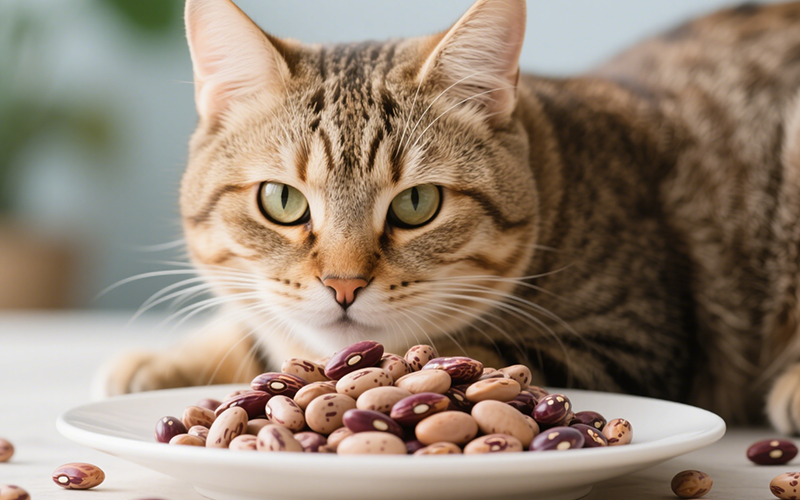
Pinto Beans: Nutritional Profile (for Humans)
Before assessing their suitability for cats, let's understand what pinto beans offer humans. They are valued for being:
High in Plant-Based Protein: A significant source of protein for vegetarian and vegan diets.
Rich in Dietary Fiber: Both soluble and insoluble fiber, aiding human digestion and promoting gut health.
Good Source of Complex Carbohydrates: Providing sustained energy release.
Packed with Minerals: Including folate, manganese, phosphorus, iron, magnesium, and potassium.
Low in Fat: Naturally low in fat content.
Contain Phytonutrients: Offering various antioxidants.
This profile makes them a healthy choice for people. However, these benefits don't directly translate to the needs of an obligate carnivore.
Feline Nutrition Essentials: The Obligate Carnivore Difference
Understanding why pinto beans aren't ideal for cats requires reiterating their core nutritional needs:
High Animal Protein Requirement: Cats need significantly more protein than omnivores, and it must be animal-derived to provide essential amino acids like taurine, arginine, and methionine in the correct forms and amounts. Plant proteins are incomplete for cats.
Specific Fatty Acid Needs: Cats require certain fatty acids, like arachidonic acid, found primarily in animal fats.
Limited Carbohydrate Digestion: Their digestive systems are short and lack key enzymes (like salivary amylase) for efficient carbohydrate breakdown. High carb intake can lead to digestive upset and offers little nutritional value.
Essential Nutrients from Meat: Cats need pre-formed Vitamin A (retinol) from animal sources, as they cannot efficiently convert beta-carotene from plants. They also have a high requirement for B vitamins readily available in meat.
Taurine Dependency: Critically important for heart health, vision, and reproduction, taurine is abundant in meat but virtually absent in plants like beans.
This biological blueprint clearly shows that plant-based foods like pinto beans fall far short of meeting a cat's primary dietary requirements.
The Core Question: Can Cats Eat Pinto Beans? (The Detailed Answer)
So, let's address the main query directly. Can cats eat pinto beans? The answer is:
**Plain, thoroughly cooked pinto beans** in ** minuscule amounts** are generally considered **non-toxic** to cats. They are unlikely to cause severe poisoning from a single tiny taste.
However, they are **not recommended** as part of a cat's diet, even as a treat, due to several significant drawbacks and potential risks.
**Raw or improperly cooked pinto beans** are **dangerous** and should **never** be fed to cats.
**Canned or seasoned pinto beans** prepared for humans are also **unsafe** due to high sodium content and potentially toxic additives.
Essentially, while a tiny piece of plain, well-cooked bean might not send your cat to the emergency vet immediately, there's no compelling reason to offer them and several good reasons to avoid them entirely.
Potential (Minimal) Benefits of Pinto Beans for Cats?
Are there any upsides? Realistically, the benefits are negligible for a cat:
Fiber: The fiber content *might* theoretically aid digestion in tiny amounts, but it can also easily cause upset. Specific veterinary-approved fiber supplements or foods are much safer and more effective if needed.
Plant Protein: While beans contain protein, it's incomplete for cats. It lacks sufficient levels of essential amino acids, particularly taurine. Relying on plant protein for a cat is nutritionally inadequate.
Minerals: They do contain minerals, but cats should be getting these in the correct forms and balances from their species-appropriate meat-based diet.
These potential minor contributions are heavily outweighed by the lack of essential nutrients and the significant risks involved.
The Significant Risks: Why Pinto Beans Are Bad for Cats
This is where the argument against feeding pinto beans becomes compelling. Several risks make them an unsuitable choice:
1. Gastrointestinal Upset (Very Common)
This is the most likely adverse effect. A cat's digestive system isn't built for beans.
Complex Carbohydrates & Oligosaccharides: Beans contain complex carbohydrates and sugars like raffinose and stachyose that cats cannot easily digest. These ferment in the large intestine, producing gas.
Symptoms: Expect flatulence (gas), bloating, abdominal discomfort, cramping, and potentially diarrhea or vomiting, even from small amounts of cooked beans.
Fiber Overload: The high fiber content, while beneficial for humans, can be too much for a cat's system, leading to diarrhea.
2. Lack of Essential Nutrients
This is fundamental. Pinto beans cannot provide what cats need most:
Incomplete Protein Profile: Deficient in essential amino acids like taurine. Feeding beans instead of meat can contribute to serious deficiencies over time.
Missing Key Nutrients: Lack pre-formed Vitamin A, arachidonic acid, and sufficient Vitamin B12 in the forms cats require.
Offering beans displaces calories that should come from nutritionally complete, species-appropriate food.
3. Dangers of Raw Pinto Beans (Lectins & Cyanide Precursors)
Raw pinto beans are toxic and dangerous for cats and should NEVER be offered.
Lectins (Phytohaemagglutinin): Raw pinto beans contain high levels of a toxic lectin called phytohaemagglutinin. This protein can bind to the intestinal lining, causing severe damage, impairing nutrient absorption, and leading to symptoms like:Ingesting even a few raw beans can cause toxicity. **Thorough cooking significantly reduces lectin levels, making cooked beans safer in this specific regard.**
Severe vomiting
Diarrhea (sometimes bloody)
Abdominal pain
Potential systemic effects.
Cyanogenic Glycosides (Trace Amounts): While less of a concern than in some other beans (like lima beans), raw pinto beans can contain trace amounts of compounds that *could* potentially release cyanide, although the primary danger is the lectin content.
Choking Hazard & Obstruction: Dry, hard beans are a serious choking hazard and can cause intestinal blockage if swallowed whole.
4. Issues with Canned / Seasoned Beans
Pinto beans prepared for human consumption (canned, refried, in chili) are unsuitable:
High Sodium Content: Canned beans are often packed in brine or heavily salted. Excess salt is dangerous for cats, potentially leading to sodium ion poisoning and worsening conditions like heart disease or kidney disease.
Toxic Seasonings: Beans are frequently cooked with ingredients lethal to cats:
Onions, Garlic, Chives: Highly toxic, causing damage to red blood cells (Heinz body anemia).
Spices (Chili Powder, Cumin, etc.): Can cause severe stomach irritation, vomiting, and diarrhea.
Fats/Oils: Often cooked with fats (lard, oil) that can cause pancreatitis or GI upset.
Never feed your cat pinto beans from your plate or from a can intended for human consumption.
5. "Empty" Calories and Obesity
Beans provide calories mainly from carbohydrates, which are essentially "empty" calories for a cat. They don't provide the necessary building blocks cats need and can contribute to weight gain and obesity if fed regularly, displacing nutrient-dense foods.
Raw Pinto Beans: A Definite No!
To reiterate this critical point: Raw pinto beans must be completely avoided. The high levels of toxic lectins (phytohaemagglutinin) can cause severe poisoning. They are also indigestible and a choking hazard. There is absolutely no safe way to feed raw pinto beans to cats.
Canned/Seasoned Pinto Beans: Equally Unsafe!
Similarly, pinto beans prepared for human meals are off-limits. The excessive salt, toxic ingredients like onions and garlic, spices, and added fats make them dangerous. Stick to plain preparation if considering beans at all (though generally discouraged).
Safe Preparation? (The Highly Cautious Approach - Not Recommended)
While the overall recommendation is to avoid pinto beans, if an owner feels absolutely compelled to offer a minuscule taste as a one-off curiosity (against general advice), these steps are mandatory to minimize *some* risks (primarily lectin toxicity):
1. Consult Your Veterinarian First: Discuss it with your vet. They will likely advise against it but can offer context based on your cat's health. 2. Use Dried Beans (Not Canned): This gives you control over salt content. 3. Soak Thoroughly: Soak dried beans in plenty of water for several hours or overnight, changing the water multiple times. This begins to reduce some problematic compounds. Discard the soaking water. 4. Cook EXHAUSTIVELY: This is the most critical step to reduce lectins. Boil the soaked beans vigorously in fresh water for at least 30 minutes, followed by simmering until they are extremely soft and mushy (often 1-2 hours). Undercooked beans can still contain dangerous lectin levels. Pressure cooking may also be effective but ensure they are completely soft. 5. PLAIN Cooking Only: Absolutely NO salt, onions, garlic, spices, oil, or other seasonings. Cook in water only. 6. Mash Thoroughly: Mash the fully cooked bean into a smooth paste to minimize choking risk and aid potential digestion. 7. Minuscule Amount ONLY: Offer a tiny amount, less than half a teaspoon, perhaps just a lick off your finger. This is a taste, not a treat or supplement. 8. Extremely Infrequent: Do not make this a regular occurrence. Once, if ever. 9. Monitor Closely: Watch your cat for 24-48 hours for any signs of gas, bloating, vomiting, diarrhea, or discomfort.
Even with these steps, the risk of GI upset remains high, and the nutritional benefit is negligible. This effort is generally not worth the potential downsides.
Recognizing Adverse Reactions
If your cat somehow ingests pinto beans (especially raw or seasoned ones), watch for:
Vomiting (potentially severe if raw beans were eaten)
Diarrhea (can be watery or bloody with raw beans)
Excessive gas / Flatulence
Bloating / Abdominal distension
Abdominal pain (hunched posture, reluctance to be touched)
Lethargy
Loss of appetite
Signs of dehydration (if vomiting/diarrhea are severe)
Contact your veterinarian immediately if you suspect ingestion of raw beans or if symptoms are severe or persistent after eating cooked beans.
Better Alternatives: Species-Appropriate Treats for Cats
Instead of risky legumes, reward your cat with treats that align with their biology:
Small Pieces of Cooked Meat: Unseasoned, cooked chicken, turkey, lean beef, lamb, or fish (boneless).
High-Quality Commercial Cat Treats: Look for meat-first ingredients and low fillers.
Freeze-Dried Meat Treats: Single-ingredient options like chicken, salmon, liver (liver in strict moderation due to Vitamin A).
Lickable Treats/Meat Slurries: Highly palatable and good for hydration.
Catnip or Silver Vine: For cats who enjoy them.
Dental Health Treats: Formulated to help clean teeth.
These provide appropriate nutrition or enrichment without the risks associated with feeding pinto beans to cats.
Veterinary Perspective on Cats and Beans
The consensus among veterinarians is clear: beans, including pinto beans, are not a recommended food for cats.
They emphasize the cat's status as an obligate carnivore and the lack of nutritional benefit from legumes.
The high potential for gastrointestinal upset (gas, diarrhea) due to indigestible carbohydrates and fiber is a primary concern.
They strongly warn against feeding raw beans due to lectin toxicity.
They caution against canned or seasoned beans due to sodium and toxic additives.
While acknowledging that a tiny amount of plain, thoroughly cooked bean isn't likely to be fatally toxic, they universally agree it's an inappropriate food choice and safer, healthier alternatives should always be chosen.
Experts agree: pinto beans for cats offer far more risk than reward.
Pinto Beans & Cats: Quick Summary Table
| Aspect | Safety Information for Cats |
| Can Cats Eat Pinto Beans? | Not recommended. Plain, thoroughly cooked beans in minuscule amounts aren't acutely toxic but offer no benefit and carry risks. |
| Nutritional Value for Cats | Negligible. Incomplete protein, indigestible carbs, lack essential nutrients (taurine, Vit A). |
| Primary Risks (Cooked) | Severe Gastrointestinal Upset (gas, bloating, diarrhea), lack of nutrition, empty calories. |
| Raw Pinto Beans | **DANGEROUS / TOXIC.** Contain high levels of lectins (phytohaemagglutinin). Cause severe GI distress. Choking/obstruction hazard. **Never feed raw.** |
| Canned / Seasoned Beans | Unsafe. High sodium, toxic seasonings (onion, garlic), spices, added fats. |
| "Safe" Preparation (If Ignoring Advice) | Dried beans only, soak, cook THOROUGHLY (boil >30min + simmer until mushy), PLAIN, mashed. Still carries GI risk. |
| Safe Portion (Cooked, Plain) | Not recommended. If given: minuscule taste (less than half teaspoon), extremely infrequent (once, if ever). |
| Symptoms of Trouble | Vomiting, diarrhea, gas, bloating, pain. Severe symptoms if raw beans ingested. |
| Better Alternatives | Cooked meat, commercial cat treats, freeze-dried meat. |
Navigating Cat Nutrition Questions? PettureX Can Help!
It's natural to have questions about what's safe for your cat, especially regarding human foods like pinto beans. Understanding the nuances of feline nutrition and potential toxins can be complex. If your cat accidentally eats something concerning, or if you notice worrying symptoms, getting quick, reliable information is crucial while you contact your veterinarian.
The PettureX App offers valuable features for informed pet parenting:
24/7 AI Vet Consultation: Have an urgent question like "My cat ate a bean, what should I do?" or need guidance on symptoms like vomiting or diarrhea? PettureX's AI provides immediate responses and helps you assess the situation's urgency, day or night.
Image Recognition Technology: Use photos to identify your pet's breed or get preliminary insights into visible health issues like skin conditions or eye problems.
AI-Powered Symptom Checker: Describe your cat's symptoms for an AI analysis of potential causes and recommended actions, helping you communicate effectively with your vet.
Extensive Pet Health Database: Quickly access information on common health topics, dietary concerns (like answering "can cats eat pinto beans?"), and preventive care.
PettureX serves as a helpful digital assistant, offering quick access to AI-driven information and support, complementing the essential, personalized care provided by your veterinarian.
Conclusion: Pinto Beans Are Best Left Off Your Cat's Plate
In conclusion, while a tiny speck of thoroughly cooked, plain pinto bean isn't likely to cause fatal toxicity, the answer to "can cats eat pinto beans?" is a strong recommendation to avoid them. They offer no significant nutritional benefits for obligate carnivores and pose considerable risks of gastrointestinal upset (gas, bloating, diarrhea) due to their carbohydrate and fiber content.
Crucially, raw pinto beans are dangerous due to toxic lectins and must never be fed. Canned or seasoned beans are also hazardous because of high salt levels and potentially toxic additives like onions and garlic. Given the lack of benefit and the potential for discomfort or harm, it's far safer and healthier to stick to species-appropriate treats.
Always prioritize your cat's health by providing a balanced, meat-based diet and consulting your veterinarian if you have any questions about safe foods and treats. Pinto beans simply don't fit into a healthy feline diet.
Related

Marshmallows and Cats: A Puffy Problem? Why Vets Say No to This Sugary Snack
- 22 Apr 2025
Kefir for Kitties? A Veterinarian-Reviewed Guide to Safety, Benefits & Risks
- 22 Apr 2025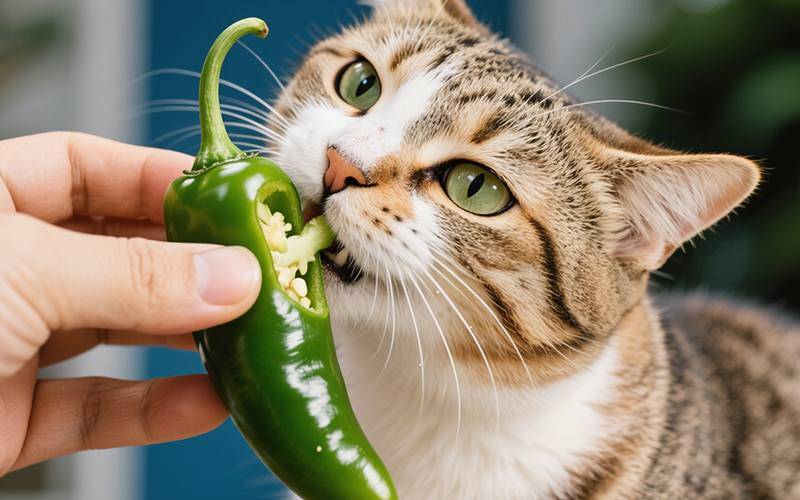
The Burning Question: Can Cats Eat Jalapenos? A Comprehensive Safety Guide
- 21 Apr 2025
Cool Temptation: Can Cats Eat Ice Cream Safely? The Vet-Backed Truth
- 21 Apr 2025
Frankly Dangerous: Can Cats Eat Hot Dogs? Vet Explains the Serious Risks
- 16 Apr 2025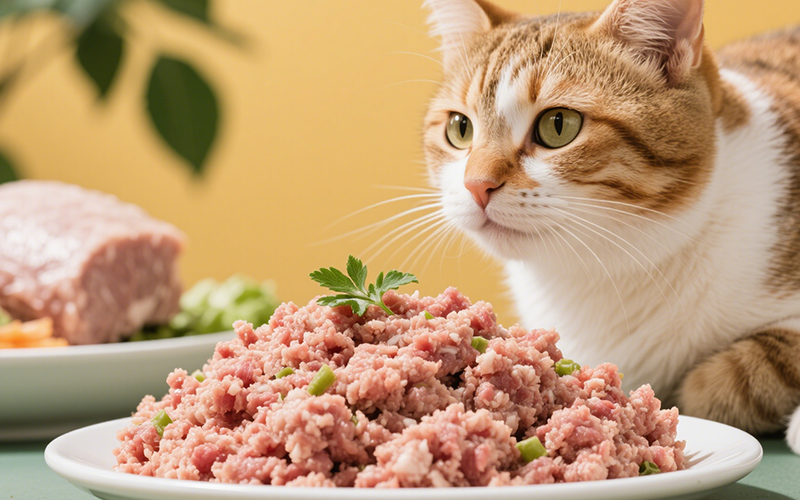
A Purrfect Protein? Can Cats Eat Ground Turkey Safely? (Vet-Reviewed Guide)
- 16 Apr 2025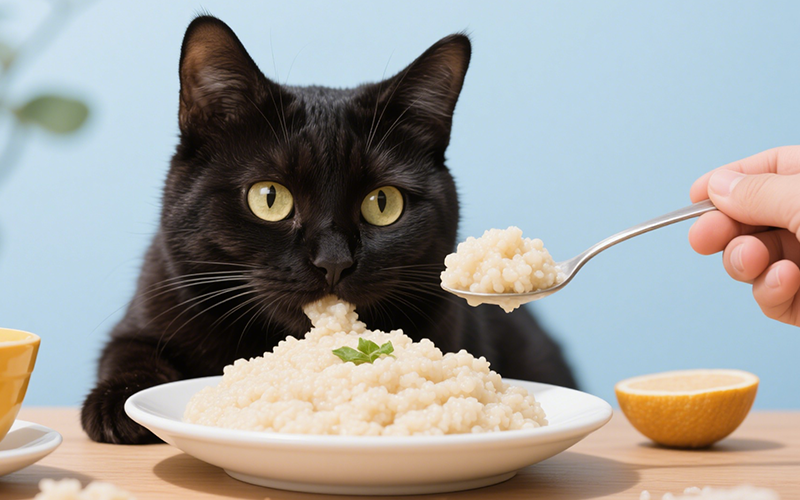
Gritty Situation: Can Cats Eat Grits Safely? Vet Explains the Risks
- 16 Apr 2025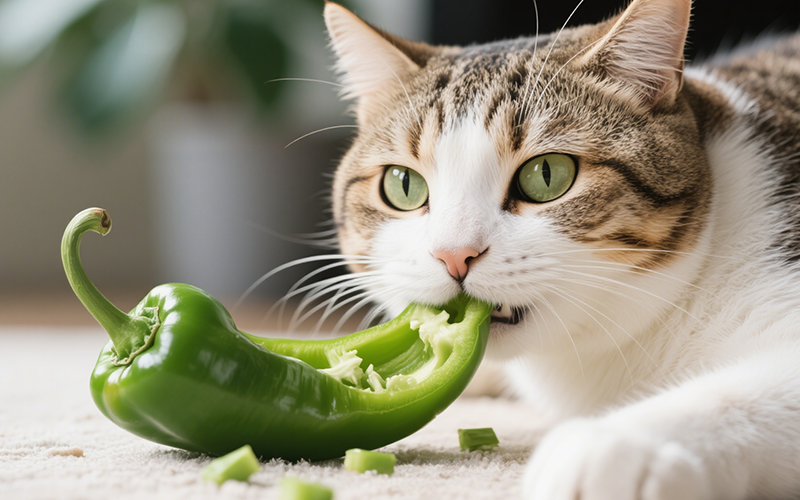
Crunchy Query: Can Cats Eat Green Peppers? A Vet-Reviewed Safety Analysis
- 16 Apr 2025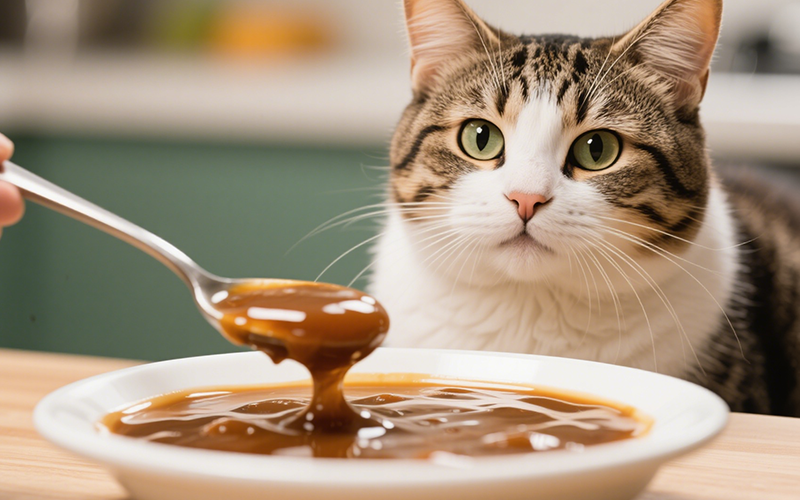
Gravy Danger Zone: Can Cats Eat Gravy Safely? (Vet-Reviewed Warning)
- 16 Apr 2025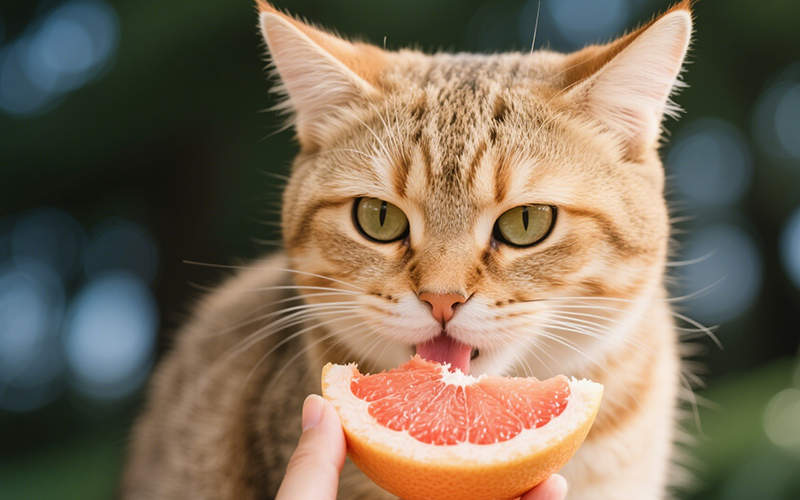
Toxic Temptation: Can Cats Eat Grapefruit? Vet Explains the Dangers
- 16 Apr 2025
